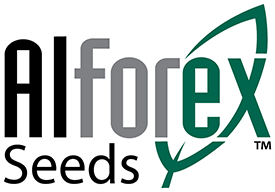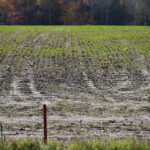Fall Planted Alfalfa
Less Weed Pressure During Establishment and More Hay Next Year
Dr. Don Miller
Director of Product Development
Alforex Seeds
At the start of 2021 western hay stocks were down significantly with Kansas hay stocks reported to be 36% lower than last year. The USDA also estimated that in 2021 Kansas would see a 1% reduction in hay acres, or 40,000 less acres. These factors combined with the ongoing drought could have a significant effect on 2022 hay stocks and prices.
Producers that want to be in position to fully capitalize on the potential higher alfalfa hay prices may want to consider a fall planting of alfalfa. The advantage of this planting is the potential of having hay sooner in the spring when prices are high, and more to sell if prices do rise significantly in the coming year.
If adequate rainfall or irrigation is available for a fall planting, alfalfa producers may want to consider planting in the fall versus waiting till next spring. There are several advantages to consider over a spring planting that can contribute to reduced costs, higher yields and potentially higher profits in today’s market. The two main factors are:
- The potential for more cuts and yield next year.
- Less establishment issues due to weeds.
The following link lists some of the main advantages of planting alfalfa this fall versus waiting till next spring.
Yield Advantage of Fall Planting
Fall seedings have the advantage of a longer establishment period and therefore are capable of full production the coming growing season. When you compare this additional tonnage to that of a spring seeding, the additional revenue can be significant.
- Yields the first year from spring seeded alfalfa are generally 40-50% less than yields from alfalfa planted in the fall.
- The longer establishment period can provide enough root reserves for an early strong first cut in 2022. If hay stocks are short coming out of the winter, having hay early in the season when prices are high could be very profitable. Also the forage quality of a first cut is generally higher adding to the potential value.
- Alfalfa planted this fall can potentially produce one or two extra cuttings next year.
Less Weed Stand Establishment Issues in the Fall
One of the main reasons why fall seedings can sometimes be more successful than spring seedings is because there is generally less weed pressure. With less weeds, the alfalfa seedlings aren’t competing as much for water and soil nutrients. The following list are a few reasons why weed pressure is often less in fall plantings:
- Weeds that might be present can be controlled prior to establishment by either a herbicide application or tillage.
- Most broadleaf weeds normally emerge in the spring, and annual weeds that do germinate in the fall will be killed by frost or won’t survive the winter.
- Early fall seeding in warmer soils allow alfalfa seedlings to germinate, grow and develop a crop canopy at a much faster rate to get a jump start ahead of the weeds.
Additional Fall Planting Advantages
- Because of the warmer, drier soil at this time of year, diseases such as Pythium, Phytophthora root rot, and Aphanomyces root rot are much less of a concern
- Seedling diseases are more likely during the spring when soils are normally cooler and wetter.
- Less insect problems during establishment period. Insect build-ups may be reduced by the approaching cold weather.
- Because the alfalfa stand is established in the fall, it is able to take advantage of early spring soil moisture
- You may avoid planting delays associated with wet spring weather, especially on heavy clay soils. Planting conditions on these soil types is more favorable in late summer plantings. Dryer fall soils reduce the risk of soil compaction during seedbed preparation and planting.
Fall Planting Date
If you do decide to try a fall planting of alfalfa, be aware that alfalfa seedings require a minimum growth and establishment period of 6-8 weeks before a killing frost (4 hrs. @ 26º F). Optimal planting dates vary due to each regions historic killing frost date, but the following are some suggested planting dates for Kansas
- Northwest Kansas – August 10–15th
- Southeast Kansas – Sept 15–30th



Needing info on pricing per acre and soil recommendations.
Hi Jered, I will have one of our District Sales Managers contact you.